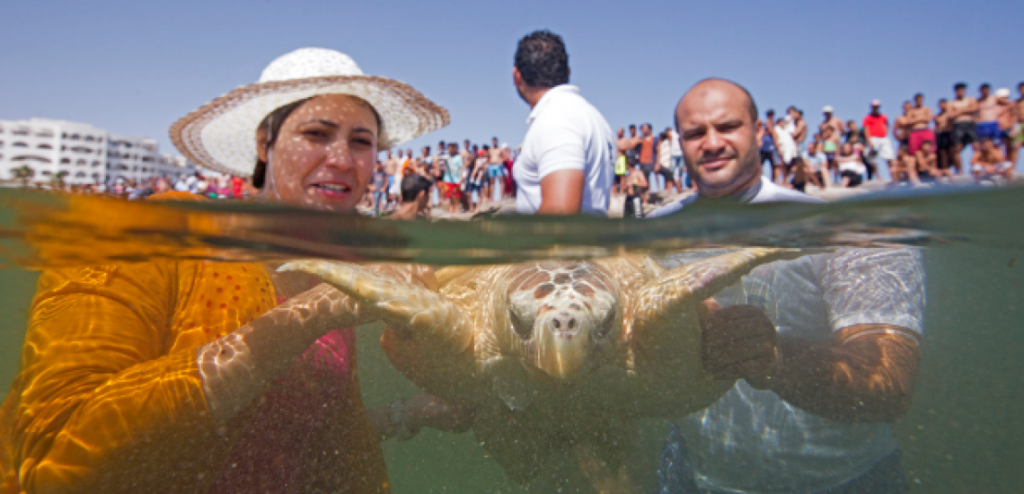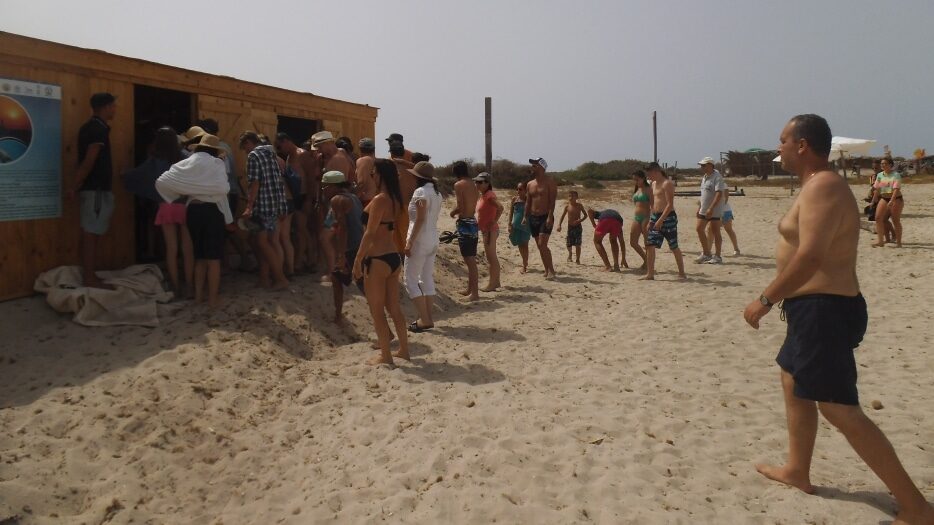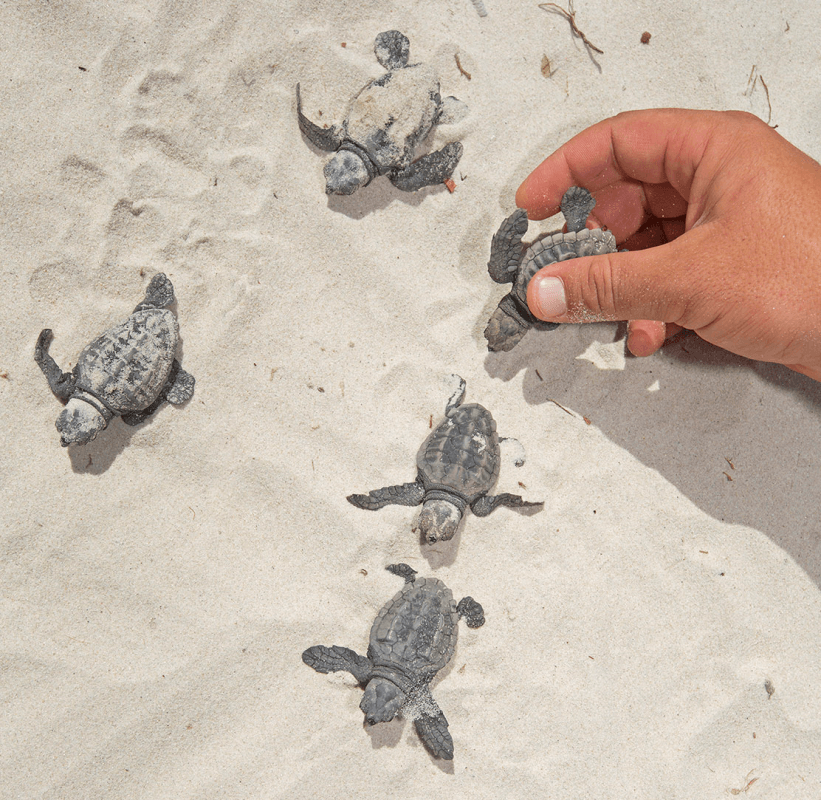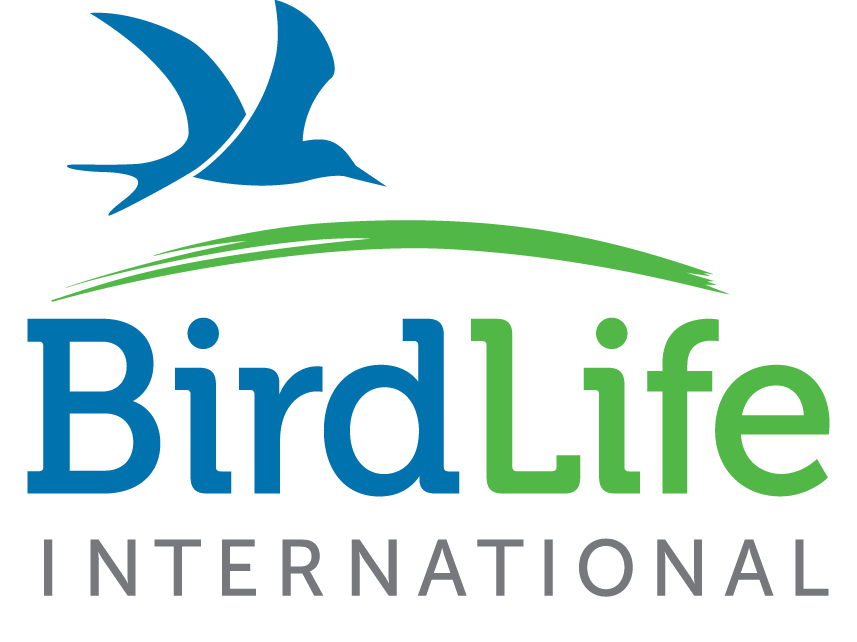From the Atlantic to the Mediterranean, turtle conservation overcoming similar challenges

The Critical Ecosystem Partnership Fund (CEPF) is funding three projects that are protecting Endangered loggerhead sea turtles.
By Shaun Hurrell
Header image: Tourists are turning into fans of turtles in Tunisia thanks to an awareness-raising project. Photo: Louis Marie Preau
An uninhabited island with beautiful beaches might seem like a safe place for a rare species of turtle to nest, but Kuriat Island of Tunisia is swamped every summer by thousands of tourists. Even the fishermen who frequent the island to rest can be unaware that the island is very important for the loggerhead sea turtle Caretta caretta – the only place in Tunisia where this Endangered species buries its eggs in the sand. Sea turtle populations are devastated from bycatch in fishing nets so any hatchlings under the sand need all the help they can get to reach the sea.
This is why a local conservation group called ‘Association des Fans de la Chebba (AFC)’, partnered by Notre Grand Bleu (NGB) and funded by CEPF, is working to raise awareness of the plight of the turtles, and has successfully gathered support from fishermen in the Chebba region of Tunisia and visiting tourists.
Realising a daily presence was needed during nesting and tourist season, and having marked nests on the beach for their protection, AFC and NGB constructed a cabin providing information and flyers to best educate the two target audiences. By providing clear explanations and advice, the project has turned the unexpected emergence of turtles from the sand (prone to accidental destruction) into a wonderful wildlife spectacle for tourists – some of whom now voluntarily help hatchlings reach the sea. Watch their video!
Over 100 artisanal fishermen have been introduced to measures to prevent the accidental capture of adult turtles. But if accidentally caught, they are being eaten. At a scale where a few hundred are caught each year here in nets, this educational project could eliminate turtle bycatch in Tunisia before a black market for their illegal meat grows.
In three months, over 4000 national and foreign tourists, plus around 100 artisanal fishermen visited the cabin. Over 500 children attended in a special organised visit, a great success for the project and great hope for the future of Kuriat Island as a protected area and location for sustainable tourism.
Following protected hatchling loggerhead sea turtles into the Mediterranean Sea, we head south-west into the Atlantic Ocean, where the islands of Cape Verde face very similar challenges for turtle conservation, albeit at a different scale. Within the remit of the CEPF Mediterranean Basin Biodiversity Hotspot, there are two projects currently conserving turtles in Cape Verde – world famous for its many species of turtle, and for its tourists.
Watch AFC’s video of a hatchling’s first release into the sea!

Same problem, different location and scale
BIOS.CV (Association for the Conservation of the Environment and Sustainable Development) are working on a project called Environmental Initiatives to Enhance Ecofriendly Tourism in Boa Vista Island, Cape Verde. Most tourists are directed to all-inclusive resorts and are blind to the island’s wildlife, way of life, and their impact on it. Identifying the country’s current lack of regulated and sustainable tourism, BIOS.CV are working hard to raise awareness of the islands importance for wildlife, and to enhance ecotourism that will benefit the local communities. As well as developing information on the beach, they have put up posters in Boa Vista airport and are working with hotels to ensure tourists reduced impacts of turtle and bird nesting, and on the island’s biodiversity.
Cape Verde has the world’s third largest loggerhead sea turtle nesting population with 90% of the nests on Boa Vista. Most recently, BIOS.CV prepared and promoted a map for cyclists and drivers to avoid turtle nests.
A short hop across to Cape Verde’s nearby island of Santa Luzia, and we find another example of a CEPF project conserving turtles. As part of a major CEPF project entitled Protecting Threatened and Endemic Species in Cape Verde: A Major Island Restoration Project run by SPEA (Sociedade Portuguesa para o Estudo das Aves; BirdLife in Portugal) and their local partner Biosfera1, like AFC in Tunisia, also have a daily presence at a nesting site to protect loggerhead sea turtles. Biosfera1 set up a camp in a National Park on the island of Santa Luzia to monitor nests, survey other biodiversity and to assess threats. All nests at risk (because they are located in flood-prone areas), are transferred into a hatchery near the camp where the eggs can complete their development.

AFC, BIOS.CV and Biosfera1 are giving Endangered loggerhead sea turtle hatchlings a helping hand through CEPF. Photo: Louis Marie Preau
“We want to show to both the local population and the tourism sector that tourism is highly dependent on effective conservation of the environment and the welfare of the local communities – and this is only possible through eco-friendly and sustainable tourism practices,”
Elena Abella from BIOS.CV.
But on Cape Verde, a further complication is that more than 500 female turtles are affected by illegal poaching and predation by feral cats each year. Again, awareness is key. Biosfera1 have set up a surveillance scheme that involves local fishermen and is monitored by staff and volunteers to prevent illegal activity.
The project has already recorded a decrease in turtle poaching during the surveillance period, but it is hoped that through Biosfera1’s work with fishermen to emphasise the value of wild turtles over those on the dinner plate, this trend will continue afterwards.

The Critical Ecosystem Partnership Fund (CEPF) is a joint initiative of l’Agence Française de Développement (AFD), Conservation International (CI), the European Union, the Global Environment Facility (GEF), the Government of Japan, the John D. and Catherine T. MacArthur Foundation, and the World Bank. Additional support in the Mediterranean Basin is provided by the MAVA Foundation. A fundamental goal is to ensure civil society is engaged in biodiversity conservation.

BirdLife International – including its Middle East office and the BirdLife Partners DOPPS/BirdLife Slovenia and LPO (Ligue pour la Protection des Oiseaux, BirdLife in France) – is providing the Regional Implementation Team (RIT) for the Critical Ecosystem Partnership Fund (CEPF) in the Mediterranean Basin Biodiversity Hotspot (CEPF Med). Find out more at www.birdlife.org/cepf-med.